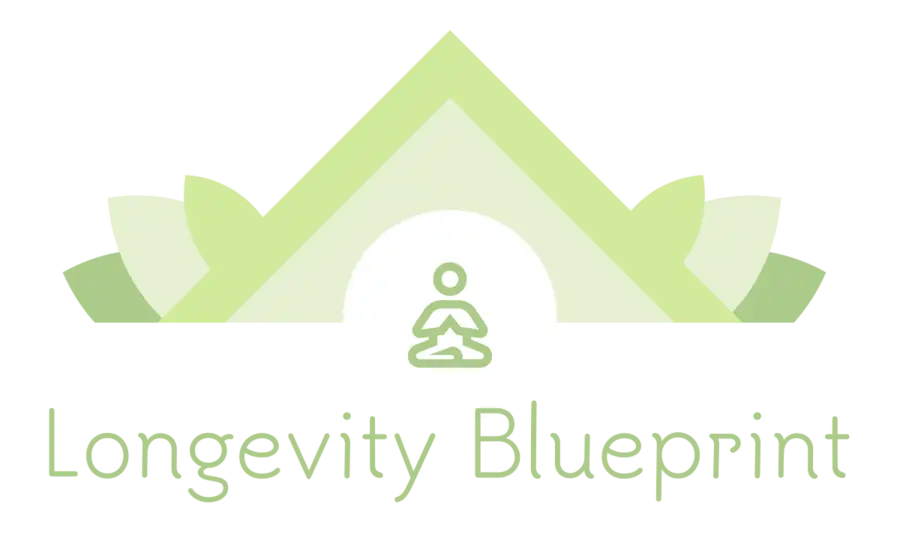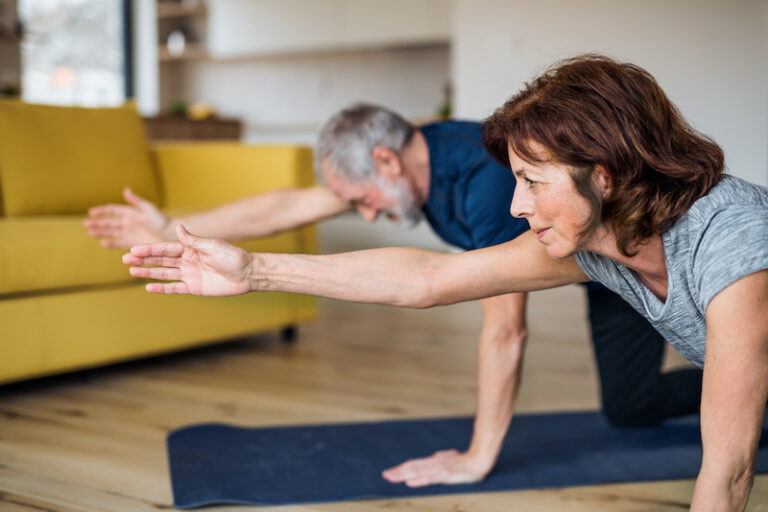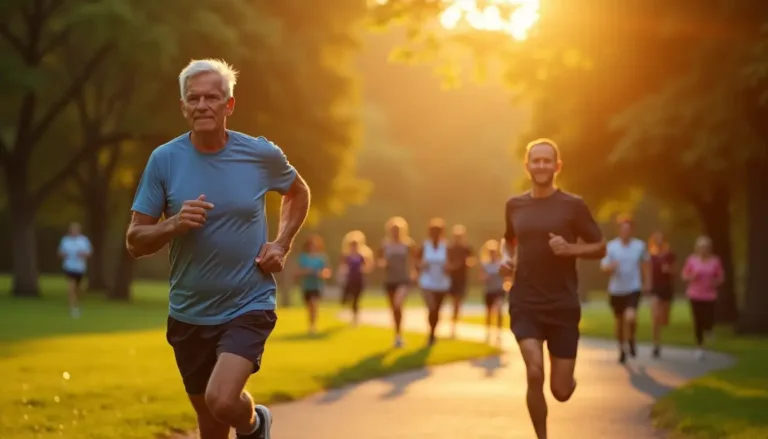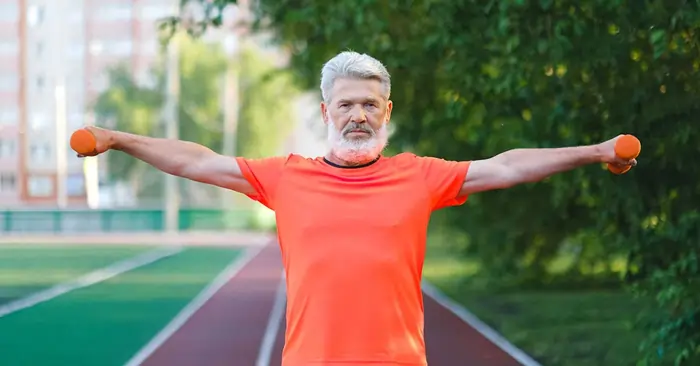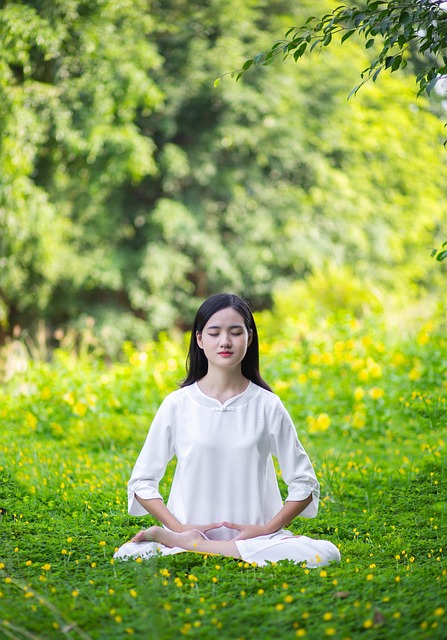The Anti-Aging Exercise Secret Doctors Don’t Tell You About

Exercise routines that fight aging could add years to your life. The average American man lives to 74.8 years, and science now proves that exercise can extend this lifespan by a lot.
A breakthrough study of 116,221 U.S. adults showed something amazing. People who exercise between 300 and 599 minutes weekly live longer – that’s four times more than what current guidelines suggest. Dr. Peter Attia’s longevity strategy focuses on four key workouts: strength, stability, steady cardio, and high-intensity training. This mix doesn’t just make you look younger – it changes your biology completely. Your muscles naturally decline 3-8% every decade after 30, but the right anti-aging exercise plan helps preserve this vital tissue that predicts longevity better than BMI.
Let’s look at how these exercises slow down aging at a cellular level. We’ll show you the perfect weekly workout formula and explain why some training methods work better than others to extend your healthspan.
The Cellular Secret: How Exercise Reverses Aging
Image Source: Cell Press
Have you ever wondered how exercise makes your body age backwards at the cellular level? The answer exists deep inside your cells. Three key mechanisms work together to create an anti-aging effect that no cream or supplement can match.
The mitochondrial connection
Your cells’ power plants—mitochondria—naturally decline as you age. Mayo Clinic research shows high-intensity aerobic exercise reverses this decline by enhancing the cellular machinery that makes new proteins [1]. Exercise supercharges your mitochondria and improves their function whatever your age.
Studies prove regular exercise enhances skeletal muscle gene expression [1] and slows down the fragmentation of mitochondria that happens with aging [2]. Your mitochondrial capacity declines with age even with adequate daily physical activity. Regular exercise training can largely offset these effects [3].
Telomere protection and lengthening
Telomeres—protective caps on your chromosomes—function like a biological clock. These caps get slightly shorter each time your cells divide and signal cellular aging. Exercise helps preserve these vital structures.
People who exercise regularly have telomeres with a biological aging advantage. They are nine years younger than sedentary individuals and seven years younger than moderately active people [4]. You can achieve this remarkable effect with about 30-40 minutes of jogging five days weekly [5].
Exercise reduces inflammation and oxidative stress over time, which protects telomeres [4]. It also activates telomerase reverse transcriptase (TERT) in white blood cells and increases protective proteins [6].
Autophagy: Your body’s cellular cleanup crew
Exercise kicks off autophagy—your cellular recycling system that removes damaged components before they pile up. This process becomes more vital as you age.
Research shows that autophagy activates in skeletal muscle during and after exercise [7]. Without this cleanup system, mitochondria become damaged and cellular waste builds up, which speeds up aging.
Exercise-induced autophagy is vital to improve metabolic control, enhance skeletal muscle adaptation, and boost physical performance [8]. Both resistance training and endurance exercise trigger this process [7].
Your body needs consistent exercise to maintain these rejuvenating cellular effects. They can vanish after just one week without activity [9].
Resources:
- National Institute on Aging: www.nia.nih.gov/health/exercise-physical-activity
- American College of Sports Medicine: www.acsm.org/education-resources
- Harvard Health: www.health.harvard.edu/topics/exercise-and-fitness
The 3-2-1 Anti-Aging Exercise Formula
A simple weekly exercise formula could add years to your life. Scientists have discovered a balanced approach that combines three different workout types. These exercises work together to curb aging at every level.
3 days of resistance training
Strength training creates the foundation of any effective anti-aging exercise routine. Your risk of dying drops by 30% (whatever the cause) if you lift weights or do resistance exercises twice weekly along with regular aerobic exercise [10].
Only 1 in 5 women do regular strength training. Those who make it part of their routine see a 30% drop in cardiovascular mortality [11]. This training builds bone density, protects joints, and helps control blood sugar [11].
Longevity physician Dr. Peter Attia suggests using half your weekly exercise time for strength training [12]. The quickest way to results is focusing on compound movements that work multiple muscle groups at once [13].
2 days of Zone 2 cardio
Zone 2 training is moderate-intensity cardio where you can talk but with slight strain. This represents the sweet spot for longevity benefits [14]. The intensity level improves your mitochondria and boosts your cells’ energy production [14].
Top athletes spend about 80% of their training time at this relatively easy effort level [14]. The best results come from at least three hours of Zone 2 cardio weekly. You can split this into multiple sessions [15].
Research shows this specific intensity creates unique benefits. Neither higher nor lower intensities can match its ability to teach muscles to use both fat and carbohydrates for fuel [14].
1 day of mobility work
Mobility training helps prevent disability and maintains independence as you age. Activities like yoga, Pilates, and tai chi improve flexibility, stability, and movement [16]. These exercises also boost balance and reduce fall risk—a major concern for older adults.
Regular mobility work keeps joints healthy and helps recovery between intense exercise days. This prevents overtraining and injury [17]. Even one mobility session weekly can bring most important anti-aging benefits [17].
Resources:
- National Institute on Aging: www.nia.nih.gov/health/exercise-physical-activity
- American College of Sports Medicine: www.acsm.org
- Harvard Health: www.health.harvard.edu/exercise-and-fitness
Strength Training: The Foundation of Longevity

Image Source: Sportive Tricks Personal Training Tonbridge
Muscle strength doesn’t simply disappear as we age – we can rebuild it through proper training methods. Studies reveal that muscle mass predicts how long we’ll live better than BMI or other traditional health markers [18]. Our bodies naturally lose 3-8% of muscle mass every decade after 30 [18]. The good news is that strategic resistance training can reverse this decline at the molecular level.
Compound movements that turn back time
Compound exercises work multiple muscle groups at once and mirror real-life movements that help maintain strength as we age. These exercises include:
- Squats and deadlifts to build lower body power
- Push-ups and bench press to develop upper body strength
- Shoulder presses and rows to improve core stability
- Farmer carries to enhance grip strength and posture
Compound movements stimulate more muscle growth than isolation exercises like bicep curls. They boost metabolism by requiring more energy from your body [18]. A 2022 study discovered that combining strength training with cardio helps you live longer [19]. Resistance training should make up about 50% of an effective longevity workout plan.
The optimal rep range for hormonal balance
Short rest intervals combined with high-volume, moderate-to-high intensity workouts create the biggest acute hormonal increases in testosterone, growth hormone, and cortisol [20]. These hormone spikes after exercise last 15-30 minutes and matter more to tissue growth than long-term changes in resting hormone levels [20].
Research shows that protocols with high volume and moderate intensity deliver the most important benefits for optimal hormonal response [3]. This method helps slow biological aging by preserving telomere length and could add up to four years to your life [21].
Recovery techniques most doctors overlook
Your body’s ability to recover decreases by up to 30% between ages 40 and 50 [2]. Active recovery – light movement at 30-60% of maximum heart rate – can improve recovery by up to 40% [2].
The best recovery techniques include cold therapy within an hour after exercise, proper protein intake (1.2-1.6 g/kg/day), and getting 7-9 hours of quality sleep [22]. These methods reduce inflammation and optimize your body’s muscle-building process.
Resources:
- National Institute on Aging: www.nia.nih.gov/health/exercise
- American College of Sports Medicine: www.acsm.org
- Harvard Health: www.health.harvard.edu/topics/exercise-and-fitness
The Surprising Cardio Method That Outperforms HIIT

Image Source: Athletica.ai
Elite athletes have quietly spent 80% of their training time in a different zone, even though high-intensity interval training (HIIT) has dominated fitness headlines for years. Zone 2 cardio—steady, moderate-intensity exercise that feels almost too easy—provides longevity benefits that HIIT can’t match.
Why Zone 2 training is the longevity secret
Zone 2 training creates unique physiological changes that help curb aging. This moderate-intensity exercise (60-75% of your maximum heart rate) boosts mitochondrial density—by up to 50% in just a few sessions [23]. These energy powerhouses are vital for cellular health and longevity.
Zone 2 training stands apart from high-intensity workouts by:
- Helping your body burn fat as fuel rather than carbohydrates [24]
- Boosting insulin sensitivity even during rest [23]
- Increasing stroke volume (amount of blood pumped per heartbeat) [25]
- Lowering various inflammation markers including CRP, TNF-α, and IL-6 [26]
Research shows people with the lowest fitness levels face five times the mortality risk compared to those with regular Zone 2 fitness. Poor cardio fitness poses a greater longevity risk than smoking [23].
How to find your personal Zone 2 sweet spot
Finding your Zone 2 is simple. Your maximum heart rate can be calculated using: 208 – (0.7 × Age) [27]. Your Zone 2 range lies between 60-70% of this number.
A 50-year-old person’s calculations would look like:
- Maximum heart rate = 208 – (0.7 × 50) = 173
- Zone 2 range = 104-121 beats per minute
The “talk test” works well without a heart rate monitor. You should be able to hold a conversation but might need brief pauses to catch your breath [24].
The ideal duration for cellular rejuvenation
The best longevity benefits come from 3 hours of Zone 2 training weekly [26]. You can split this into four 45-minute sessions or three 60-minute sessions based on your schedule.
Each session should last at least 35-40 minutes. This duration triggers mitochondrial division and removes damaged mitochondria (mitophagy) [23].
The results speak volumes. A large study following 120,000 participants over 8 years revealed significant decreases in heart disease, hypertension, diabetes, stroke, and cancer rates among people maintaining Zone 2 fitness [23].
Resources:
- American College of Sports Medicine: www.acsm.org
- Harvard Health: www.health.harvard.edu/exercise-and-fitness
- National Institute on Aging: www.nia.nih.gov/health/exercise-physical-activity
Conclusion
Science confirms what athletes have known all along – exercise truly is the fountain of youth. Research into cellular mechanisms, workout formulas, and training methods shows how specific exercise patterns can add quality years to life.
The research is clear. A combination of strength training, Zone 2 cardio, and mobility work creates a powerful anti-aging effect. This blend protects telomeres, improves mitochondrial function, and activates cellular cleanup systems that slow biological aging. Quick fixes and trendy workouts won’t cut it – consistent use of these proven methods brings the best results.
The benefits are available to everyone, whatever their age or fitness level. Just two weekly strength sessions and three hours of Zone 2 cardio can trigger major cellular changes within weeks. The science behind exercise’s anti-aging effects might be complex, but putting it to work is simple – move regularly, lift weights, and keep steady cardio efforts.
Longevity exercise isn’t about pushing to extremes. Your focus should be on green practices that you can maintain for decades. The most effective anti-aging routine will always be the one you keep following long-term.
Additional Resources:
- National Institute on Aging Exercise Guide: www.nia.nih.gov/health/exercise
- Mayo Clinic Fitness Resources: www.mayoclinic.org/fitness
- American College of Sports Medicine: www.acsm.org/education-resources
FAQs
Q1. What is the most effective anti-aging exercise routine?
The most effective anti-aging exercise routine combines three key components: 3 days of resistance training, 2 days of Zone 2 cardio, and 1 day of mobility work. This balanced approach targets multiple aspects of cellular health and longevity.
Q2. How does exercise reverse aging at the cellular level?
Exercise reverses aging at the cellular level through three main mechanisms: enhancing mitochondrial function, protecting and lengthening telomeres, and activating autophagy (the body’s cellular cleanup process). These effects collectively slow down biological aging.
Q3. What is Zone 2 cardio and why is it important for longevity?
Zone 2 cardio is moderate-intensity exercise where you can maintain a conversation but with slight difficulty. It’s crucial for longevity because it optimally triggers improvements in mitochondrial density, enhances fat-burning capacity, and reduces inflammation markers.
Q4. How much exercise is needed to see anti-aging benefits?
Research suggests that exercising between 300 and 599 minutes weekly can maximize lifespan benefits. This typically translates to about 3 hours of Zone 2 cardio and 2-3 strength training sessions per week for optimal anti-aging effects.
Q5. Can strength training really slow down aging?
Yes, strength training is fundamental in slowing down aging. It helps maintain muscle mass, which naturally declines with age, improves bone density, and enhances overall metabolic health. Regular resistance training can reduce the risk of premature death by up to 30% when combined with aerobic exercise.
References
[1] – https://newsnetwork.mayoclinic.org/discussion/mayo-clinic-discovers-high-intensity-aerobic-training-can-reverse-aging-processes-in-adults/
[2] – https://thirdcoasttraining.com/2025/02/02/how-athletes-over-40-can-enhance-recovery-for-better-performance/
[3] – https://www.unm.edu/~lkravitz/Article folder/hormoneResUNM.html
[4] – https://news.byu.edu/news/high-levels-exercise-linked-nine-years-less-aging-cellular-level
[5] – https://time.com/4776345/exercise-aging-telomeres/
[6] – https://pmc.ncbi.nlm.nih.gov/articles/PMC8202894/
[7] – https://pmc.ncbi.nlm.nih.gov/articles/PMC5538402/
[8] – https://www.cell.com/cell-metabolism/fulltext/S1550-4131(23)00011-6
[9] – https://healthtree.org/myeloma/community/articles/researchers-find-that-aerobic-exercise-can-reverse-aging-effects-
[10] – https://www.health.harvard.edu/staying-healthy/strength-training-might-lengthen-life
[11] – https://www.npr.org/sections/health-shots/2024/03/11/1236791784/strength-resistance-weight-training-longevity-aging-heart-disease
[12] – https://www.cnbc.com/2023/06/19/longevity-doctor-the-ideal-exercise-routine-for-a-long-healthy-life.html
[13] – https://edition.cnn.com/2025/04/03/health/maintain-mobility-older-age-wellness/index.html
[14] – https://www.nytimes.com/2025/02/19/well/move/zone-2-exercise-benefits.html
[15] – https://omre.co/blogs/news/connection-between-zone-2-training-and-longevity?srsltid=AfmBOor9pHrUTBMUhM0YZa4IN2xvR5Kv5Wq3251UCsovhXMJEW1OIVXM
[16] – https://experiencelife.lifetime.life/article/the-importance-of-maintaining-mobility-as-you-age/
[17] – https://www.marieclaire.co.uk/life/health-fitness/3-2-1-workout-method
[18] – https://www.jinfiniti.com/anti-aging-exercises/?srsltid=AfmBOopjkmVQuTzjovc_05jgIx27crFVDkSU_3Oyb6ocR1EKwAsI8v1H
[19] – https://www.businessinsider.com/anti-aging-exercise-longevity-doctor-peter-attia-2023-10
[20] – https://pubmed.ncbi.nlm.nih.gov/15831061/
[21] – https://www.prevention.com/fitness/a63238499/strength-training-adds-years-to-your-life-study/
[22] – https://medium.com/@fortifiedhuman/5-science-backed-recovery-methods-for-improved-longevity-714cbc6fe95c
[23] – https://www.hvlongevity.com/2023/09/14/revisiting-zone-2-training-why-is-zone-2-good-for-longevity/
[24] – https://health.clevelandclinic.org/exercise-heart-rate-zones-explained
[25] – https://www.made2movept.com/post/zone-2-training
[26] – https://omre.co/blogs/news/connection-between-zone-2-training-and-longevity?srsltid=AfmBOop2EfsxSKI8tiHyxqTnHcb35uN-8viMo9IC49-nX0e2BjBKCxV3
[27] – https://gethealthspan.com/science/article/zone-2-endurance-training-longevity-cardiovascular-musculoskeletal-health?srsltid=AfmBOoqL1sTYs8D4CD7iIzCh4qdmGYFWeBvi64bz1WB9hkCnOEXZkkL4
